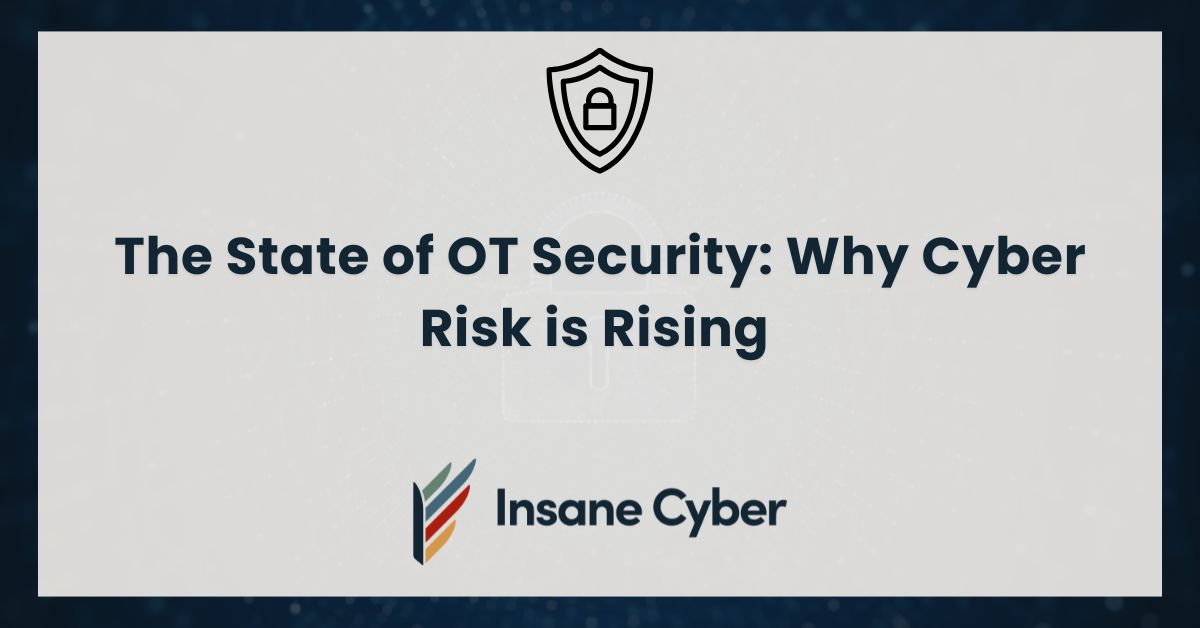When it comes to Operational Technology (OT), one thing remains constant: the systems. Designed to last decades without frequent updates, OT infrastructure is built for reliability and longevity. But while the systems stay the same, one thing has been evolving rapidly and aggressively: cybersecurity threats.
For OT professionals, security managers, and IT specialists, this rapidly shifting landscape presents a significant challenge. With limited resources and increasing complexity in cyberattacks, the gap between maintaining secure operations and staying ahead of adversaries continues to widen.
Static OT Systems in a Dynamic Threat Landscape
Unlike IT systems, where updates and new deployments are common, OT environments tend to operate with a “set it and forget it” mentality. These systems are often responsible for mission-critical operations in industries like manufacturing, energy, and transportation, where even minimal downtime can be extremely costly.
However, this reliance on older systems creates vulnerabilities. Many OT environments lack modern security protocols, leaving them especially susceptible to modern-day cyberattacks. Attackers increasingly see OT systems as low-hanging fruit, exploiting their outdated defenses for high-impact rewards.
A Constant Problem in a Growing Threat Landscape
Cybersecurity experts are raising the alarm. According to recent industry reports:
- Ransomware targeting OT systems increased by 87% last year. Attackers recognize the value of operational disruptions and often demand millions of dollars to restore normalcy.
- Insider threats and human error remain prevalent, accounting for a large portion of OT security incidents. Small mistakes can lead to significant vulnerabilities, especially in environments where security measures and training are outdated.
- Supply chain attacks are becoming more sophisticated, with attackers leveraging third-party vendors to infiltrate unsuspecting OT systems.
All of these risks paint a clear picture of how OT security is lagging behind in a world of increasingly advanced cyber threats.
Small Teams. Giant Risks.
One of the most glaring issues in OT security is resource allocation.
Many large organizations rely on small security teams to protect massive, sprawling OT infrastructures. These teams are often tasked with monitoring and defending against everything from external network attacks to insider threats, all while managing legacy systems that weren’t designed to handle cybersecurity best practices.
With minimal manpower, many security teams face:
- Alert Fatigue: A constant stream of incident alerts makes it nearly impossible to identify the most critical threats in real-time.
- Blind Spots: Limited resources make it challenging to continuously monitor and audit systems for vulnerabilities or suspicious activity.
- Lack of Specialization: OT cybersecurity requires a specific skill set, but teams often grapple with limited access to professionals trained for the unique challenges in OT environments.
This creates a vulnerable ecosystem where even small cracks in the defense can allow catastrophic breaches to occur.
What’s Driving the Spike in Cyber Risks?
To truly understand why OT cyber risks are rising, it’s important to look at the key drivers behind this trend.
- Increasing Convergence of IT and OT
The gap between IT and OT is shrinking. Many organizations are integrating their IT and OT systems to improve efficiencies, opening new doors for attackers to gain access to OT environments through IT vulnerabilities.
These integrations often happen without adequate security measures, and the result is an interconnected system with twice the exposure.
- Legacy Infrastructure
As previously mentioned, OT systems are built to last. However, “lasting” comes at a cost. Legacy systems were not designed with cybersecurity in mind, and regular updates are often expensive, complicated, or even downright incompatible with the infrastructure.
This leaves many organizations dependent on outdated security protocols that can’t keep up with today’s threats.
- Targeted Attacks on Critical Infrastructure
Critical industries like energy, healthcare, and manufacturing are prime targets for cybercriminals and even nation-state actors. These industries are not only financially lucrative but also essential to society, making any disruption a high-stakes event.
The attackers know this too, and they tailor their tactics accordingly.
- Growing Sophistication of Cybercriminals
Attackers are no longer just hackers in hoodies. They’re organized groups, nation-states, and specialized ransomware gangs that operate with precision. Armed with advanced tools and extensive knowledge, their ability to exploit weaknesses in OT systems has never been greater.
Addressing the Challenges in OT Security
Improving OT security requires a proactive and structured approach. Here are key strategies that can help organizations reduce their risk exposure:
- Adopt a Zero-Trust Security Model
Move away from implicit trust systems and ensure all users, applications, and devices are verified before granting access. This model reduces the chances of lateral movement within networks, protecting critical OT environments. - Upgrade Legacy Systems
While upgrading OT infrastructure may seem overwhelming, gradual updates in combination with risk mitigation measures, such as segmentation, can significantly reduce vulnerabilities. - Enhance Staff Training
OT staff are often skilled operators but may lack cybersecurity expertise. Provide regular training to empower them to spot threats, recognize phishing attempts, and practice safe behaviors. - Invest in Continuous Monitoring
Utilize tools designed for OT networks to detect unusual activity and threats in real time. Solutions that provide both visibility and intelligence can help security teams stay ahead of potential attackers. - Bridge the IT-OT Gap
Encourage IT and OT teams to collaborate on securing interconnected systems. The more aligned these teams are, the easier it is to implement cohesive security measures.
A Call to Action for OT Security
The state of OT security presents a challenging reality, but it’s not without hope. By understanding the risks, prioritizing resource allocation, and leveraging modern strategies, organizations can better protect their operational technologies from evolving cyber threats.
For OT professionals, security managers, and IT specialists, the time to act is now. Cyber risks are rising, but with the right tools and practices, they are far from insurmountable.
Defend your OT infrastructure against today’s threats and tomorrow’s risks by staying informed and proactive.
Are you ready to strengthen your OT security posture? Contact Insane Cyber to discuss.





